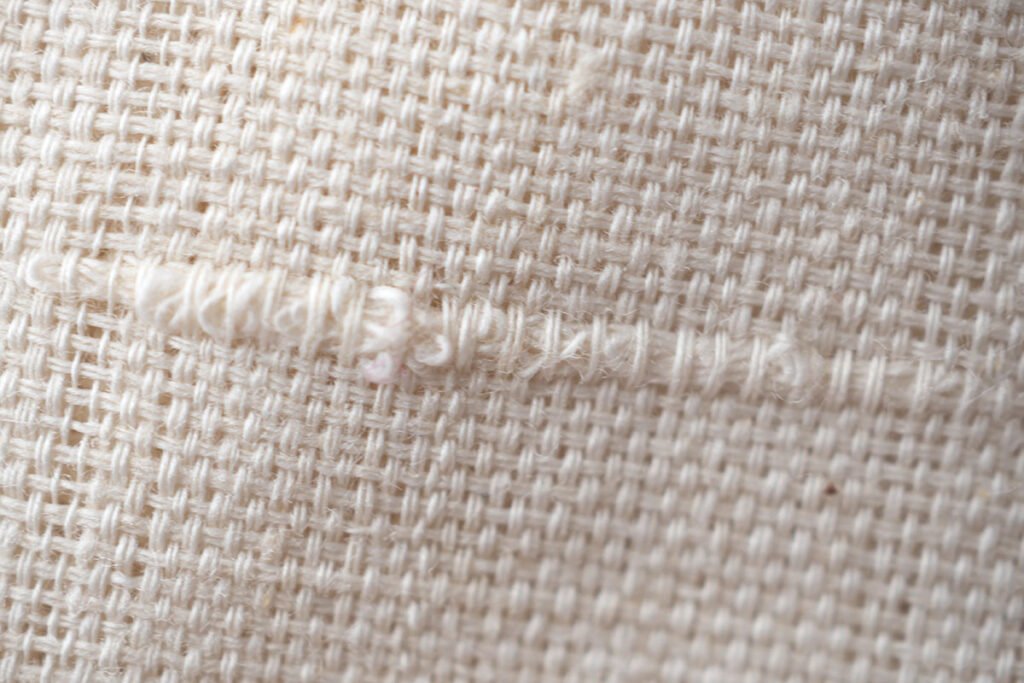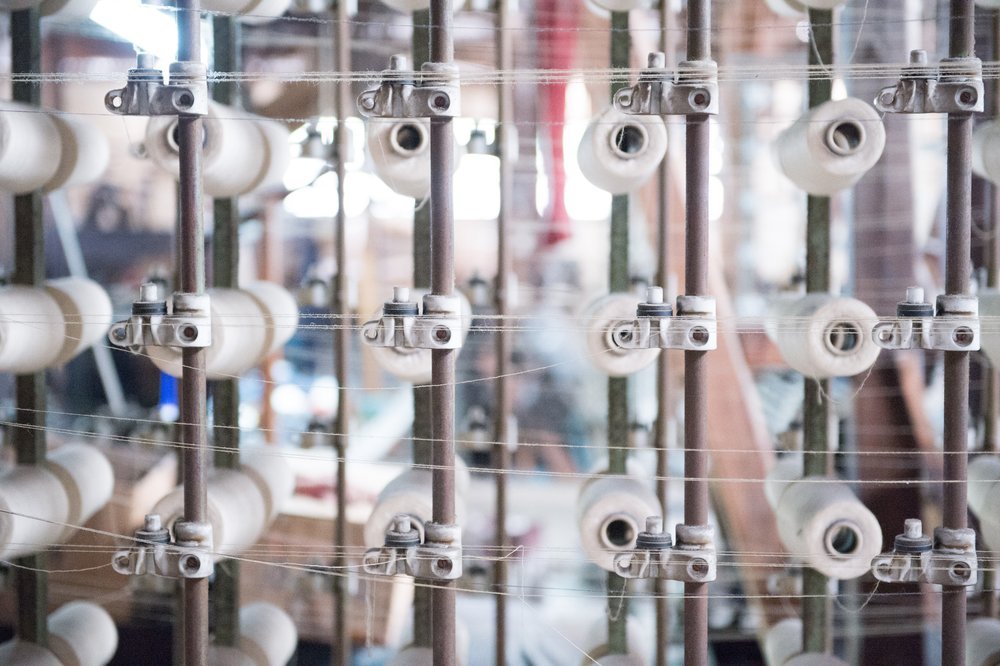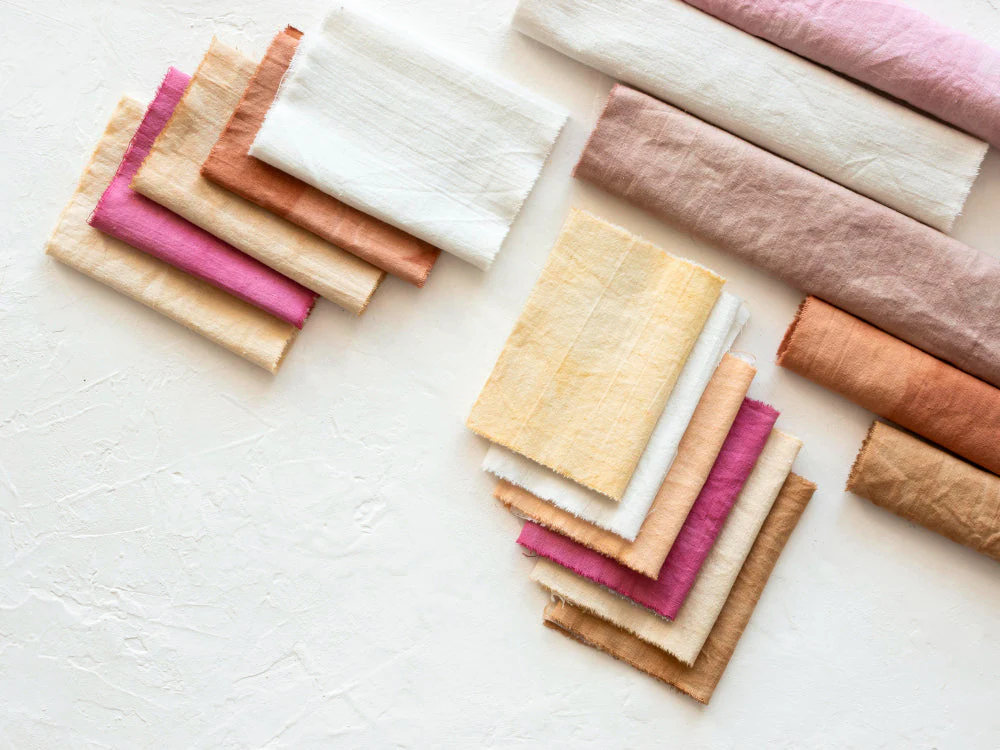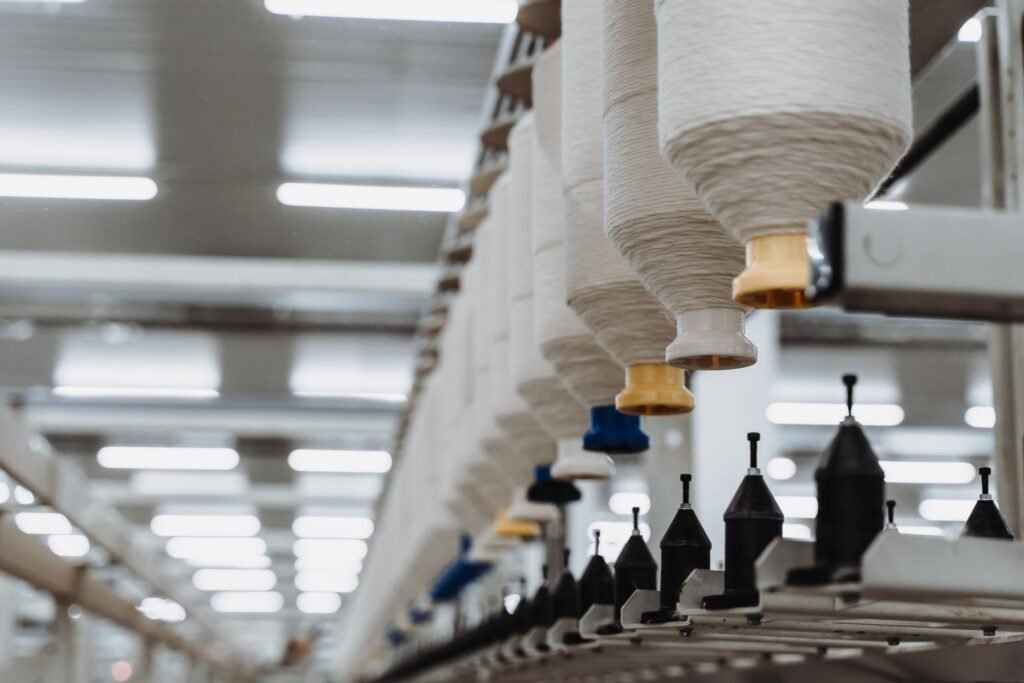Slub cotton t shirt are made from slub cotton, a fabric known for its subtle texture and one-of-a-kind properties.
Unlike smooth, even cotton, slub cotton has a naturally irregular texture. These intentional imperfections give the fabric a relaxed, organic look that feels effortless and lived-in.
Slub tee shirts carry a quiet confidence. They have that perfectly imperfect texture that adds depth and dimension to even the simplest outfit. Pair one with your go-to jeans and a pair of clean sneakers or loafers, and you’ve nailed a timeless look that works just as well on a laid-back weekend as it does at a casual dinner.
It’s effortless, yet always makes a lasting impression. That’s the beauty of a well-made slub cotton tee.
What Is Slub Cotton?
Cotton slub fabric has an uneven texture and is often viewed as a ‘flawed fabric’ because of the slubs that run through it. The term ‘slub’ can be used to describe other fabric types as well. The ‘slub’ is within the yarn that makes the fabric. So you see it more frequently in yarns that have been hand spun.
Slub cotton is a type of cotton fabric known for its unique, slightly irregular texture created by slub yarns—yarns that have varying thicknesses along their length.
With more manufactured slub cotton, the slub is created using a very specific process that is applied to the cotton before it is woven. Where cotton is run through a machine so that it twists in an uncontrolled manner to create those uneven slubs.

A Tiny History Of Slubbed Fabrics
Slub cotton fabric has a rich history rooted in the early days of textile production. Originally, the term “slub” referred to the uneven, thickened areas in yarn caused by manual twisting of fibers, which produced irregularities in the fabric’s texture. These slubs were initially considered flaws or defects because they created an uneven appearance in the finished cloth.
Historically, these slubs occurred naturally in hand-spun cotton. Every slub was a fingerprint of craftsmanship. As technology evolved, machinery was developed to eliminate these irregularities, producing smooth, uniform fabrics. But in a twist of fashion fate, the unique texture of slub cotton made a comeback.
Over time, those little ‘flaws’ have gained popularity because of the organic look to them.
It’s celebrated in everything from t-shirts to upholstery for its comfort, breathability, and tactile appeal. The irregular bumps and lumps in the yarn, once seen as imperfections, are now deliberately created and valued for their aesthetic appeal, giving garments a natural, casual, and tactile quality.

How is Slub Cotton Made?
Slub cotton is made by spinning cotton fibers into yarns with intentionally varying thicknesses, creating an uneven texture with small bumps called slubs. This effect is achieved by twisting the cotton fibers irregularly during the spinning process, either by hand or machine, which produces thicker and thinner sections along the yarn. The slub yarn is then woven or knitted into fabric, often using plain or twill weaves, to highlight the textured appearance.
Modern production can use rotor-spinning machinery where the speed or direction changes cause the fiber to gather unevenly, forming slubs efficiently. After weaving, the fabric is dyed and may be printed or finished with treatments. Such as pre-washed and softened to enhance durability and feel.
- Raw Cotton Preparation
Select high-quality cotton raw materials. After opening, cleaning, carding and drawing, impurities are removed and fibers are straightened. - Slub Yarn Spinning
During the spinning stage, special equipment is used to control the fiber drafting speed. Periodically form changes in thickness. Thus, slub yarn with random or regular knot structure is produced. - Fabric Formation
Knot yarn is used in weaving or knitting to form a fabric texture with irregular graininess or stripes. Knitting is mostly used for clothing fabrics with high elasticity and softness requirements. Weaving is suitable for stiff products such as shirts. - Dyeing and Finishing
The fabric enters the dyeing and finishing stage. Slub fabrics absorb dye differently due to thickness changes, resulting in slight color difference and natural visual hierarchy. It is often used in combination with enzyme washing, stone grinding, softener treatment and other processes.
Are There Different Types Of Slub Fabric?
There are two different types of slub fabrics available in the market. They differ based on how they are made. The first is a slub jersey fabric which is knitted from a single slub yarn.The second is woven slub fabric.
Common types of slub fabric include:
- Cotton slub fabric: Made from cotton yarns spun with intentional irregularities, giving a bumpy texture. It is popular for casual clothing like T-shirts, polo tees, and sweatshirts due to its softness and breathability.
- Linen slub fabric: Made from linen yarns with subtle thickness variations, resulting in a natural, rustic texture. This fabric has crisp and breathable properties.
- Silk slub fabric: Woven from silk yarns twisted to create small random bumps, giving a smooth yet textured appearance. It is used for dressier clothing like blouses and dresses.
- Wool slub fabric: is durable, soft, and warm, perfect for the colder winter months. Perfect for making warm and cozy garments like sweaters and scarves.
- Rayon slub fabric: rayon slub fabric is great for draping, and is also soft and breathable.
- Blend slub fabric: is a sort of hybrid slub fabric. Its characteristics will depend on the types of fibers used in its construction.

What are the benefits of slub fabric?
Slub fabric offers several benefits that make it popular for both clothing :
- Unique visual and tactile feeling
Slub fabric intentionally creates “knots” of varying thickness during the spinning process. These irregular yarn knots give the fabric a natural and casual texture, giving the finished garment an undecorated but highly designed retro style or artistic texture. - Good breathability and comfort
Due to the irregular structure of the yarn, Slub fabric forms tiny gaps during weaving. These gaps enhance air circulation and help to wick away sweat and heat. - Skin-friendly due to natural texture
Slub fabrics mostly use natural fibers (such as pure cotton, linen, bamboo fiber, etc.) as base materials. The combination of natural materials and Slub texture is not only soft and close to the skin, but also reduces friction and irritation to the skin. - High design flexibility
Slub fabrics can be used in a variety of knitting and weaving processes. Designers can adjust the final visual effect according to the knot density and fabric tension. Slub fabrics are widely used in T-shirts, shirts, dresses, and home textiles. - Durability and easy care
Slub structures are not easily deformed during washing, and the natural elasticity of the fabric and the varying thickness of the yarn knots help maintain the stability of the pattern. Slub fabrics are not easy to wrinkle and do not need to be ironed, which is in line with modern consumers’ preference for convenient care. - Sustainability and environmental protection
Slub fabrics are usually made of natural fiber raw materials. It conforms to the concept of sustainable fashion. It can also be combined with organic cotton, which has great environmental potential.
Does slub cotton shrink?
Slub cotton can shrink, depending on several key factors related to its fiber composition, fabric construction, and finishing processes.
- Fiber Composition
Slub cotton remains 100% cotton. Since cotton is a natural cellulosic fiber, it inherently possesses a tendency to absorb moisture and contract under heat and agitation, which leads to dimensional shrinkage. - Fabric Construction and Yarn Characteristics
The slub effect in cotton is created during the spinning process, where the yarn thickness varies. During the first few wash cycles, these areas may react differently to heat and moisture. If the fabric is not properly stabilized, this can cause irregular shrinkage or distortion. - Finishing Treatments and Pre-shrinking
The extent to which slub cotton shrinks depends primarily on the finishing processes used during production. If these processes are ignored or inadequately performed by the manufacturer, the fabric is more likely to shrink, especially when dried in hot water and at high temperatures. - Care Conditions and Laundering Practices
It is recommended to wash slub cotton garments in cold water and air dry. Repeated exposure to harsh washing conditions can cause cumulative shrinkage, even for pre-treated fabrics.
Slub cotton does shrink. Like regular cotton, slub cotton fibers contract when exposed to water and heat during washing and drying. This shrinkage occurs because the natural cotton fibers absorb moisture and then tighten as they dry. To minimize shrinkage, wash slub cotton in cold water and air dry or use a low heat setting in the dryer. Pre-shrunk slub cotton fabrics reduce this effect but may still experience slight shrinkage over time.

Why We Use Slub Cotton
We are a professional clothing manufacturer. The choice of fabric directly affects product quality, production efficiency, brand positioning and customer satisfaction. We choose slub cotton. Not only because of its aesthetic value, but also because of its technical and commercial advantages throughout the production and sales cycle.
- Unique visual effects without additional processing
Slub cotton naturally forms an irregular textured surface. This gives the fabric a refined, vintage, handmade texture. Provide products with high perceived value and unique designs. - Material efficiency and waste reduction
During the spinning process, slub yarn allows us to use short-staple cotton or fibers with smaller defects. By incorporating these materials into slub yarn, we improve the utilization of raw materials and reduce waste. This is in line with our sustainable development goals & environmental protection needs. - Production-friendly performance
Slub cotton performs well during cutting and sewing. The fabric structure has sufficient stability. It helps to improve production efficiency and consistency. - Light, breathable and comfortable
Slub cotton clothing is naturally lighter and more breathable, making it an ideal choice for spring and summer series or warm climate markets. Customers often associate slub cotton with comfort and ease. Slub cotton clothing performs well in wear tests and consumer feedback. - Versatility of product lines
We apply slub cotton to various categories – from casual wear such as T-shirts and henleys to loungewear and even high-end basics. - Cost-effective brand value
The yarn cost of slub cotton may be slightly higher than regular ring-spun cotton. But it brings higher overall brand value to the final garment. Consumers perceive slub cotton garments as more natural, handmade or “designer”. This allows our brand partners to offer products at more competitive prices while maintaining good profit margins.
Last words
As a clothing manufacturer, we understand that fabric is not only the foundation of clothing, but also the core of brand expression.
We choose to use Slub cotton because it can give clothing a unique texture and visual appeal while maintaining comfort. This fabric can meet consumers’ pursuit of personalization and high quality.
During the design and production process, Sumkclothing pays attention to every detail to ensure that each Slub T-shirt can show the unique charm of the fabric and our craftsmanship. In this way, we not only provide a piece of clothing, but also convey a lifestyle and aesthetic concept.
If you are looking for a manufacturer that combines quality, innovation and ethical standards, Sumkclothing is your ideal partner. For more information or to start a discussion, please contact us today.




